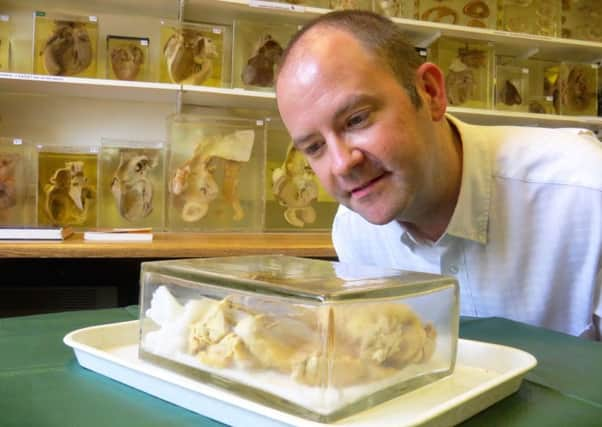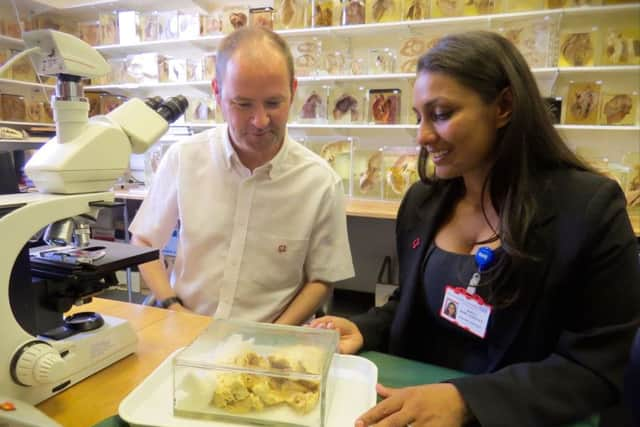Transplant man's face-to-face with his former heart


Kieran Sandwell, a 45-year-old computer analyst from Berkhamsted, told the Herald Express how he was left “speechless” by the sight of his old organ, but happy it had been helpful for medical research.
Kieran was born with a type of congenital heart defect called transposition of the great arteries (TGA), where the main arteries of the heart are ‘plumbed’ the wrong way around.
Advertisement
Advertisement
And he had a series of medical episodes throughout his life, including a type of surgery called the ‘Mustard procedure’ at the age of three to repair his TGA, a heart attack at 13, and continued problems such as abnormal heart rhythms which contributed to the development of heart failure.


His heart deteriorated over the years and by the age of just 35 Kieran was in end-stage heart failure.
Luckily he received a heart transplant the following year, and donated his original heart to Royal Brompton Hospital for use in British Heart Foundation funded-research.
Kieran said: “It was not what I expected at all.
“Leading up to the day I had thought it would be easy, but when they brought the heart out I was speechless. I had goosebumps.


Advertisement
Advertisement
“One of the things that struck me most was the sheer size of the heart. Hearts are normally the size of a fist, but mine was almost triple this.
“I had been warned it would be big, but nothing can prepare you for that. It looked so big that it could only just have fitted in my chest.”
Since his transplant Kieran has taken part in a number of endurance events, running the London Marathon twice and has even sky-dived from 10,000ft.
He said: “I’m looking after my donor’s heart and putting that to good use, while I have given my own heart for the British Heart Foundation’s research and they are making good use of it.
“It’s like recycling.
Advertisement
Advertisement
“I had always wanted to donate the heart, and I wanted it to go to the Brompton, because I thought it must be of some use to them, even for education. I was texting Sonya once I came round to check that she had received it.
“Thinking about all the research that has been done, and how that is going to improve the outcomes for patients who are born with heart conditions, is amazing.”
Dr Babu-Narayan, who is a BHF-funded Intermediate Clinical Research Fellow and cardiologist at Royal Brompton Hospital, said: “My research aims to reduce early deaths by improving medical investigations for abnormal heart rhythms or heart failure.
“I am investigating when it is best to recommend that treatment, such as another heart operation, is needed.
Advertisement
Advertisement
“Because of Kieran’s help with research we are confident that what we see with MRI imaging in other congenital heart disease patients, who do not have heart tissue available to look at under the microscope, is correctly identified as scarring.
“I would not be able to do research to help people born with heart defects without help from the British Heart Foundation. The BHF’s supporters help fund my research work at Imperial College London and Royal Brompton Hospital.”
Congenital heart disease is diagnosed in at least 1 in 180 births, which equates to around 4,000 each year or 12 babies each day in the UK.
The BHF is a major funder of research into congenital heart disease with millions of pounds worth of research projects across the UK.
All of that research is made possible by donations and support from the public.
Find out more about the BHF’s life saving research at bhf.org.uk/research